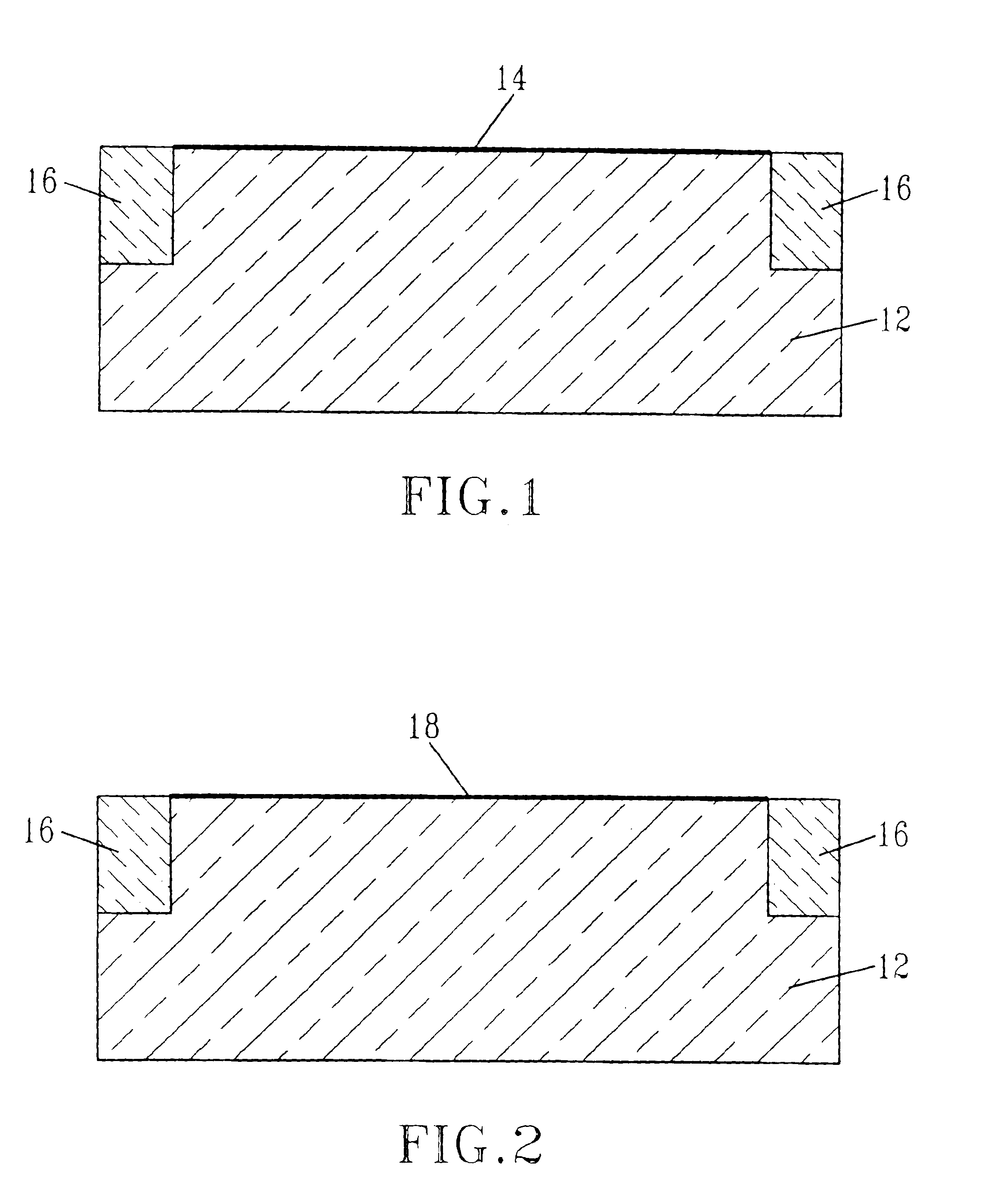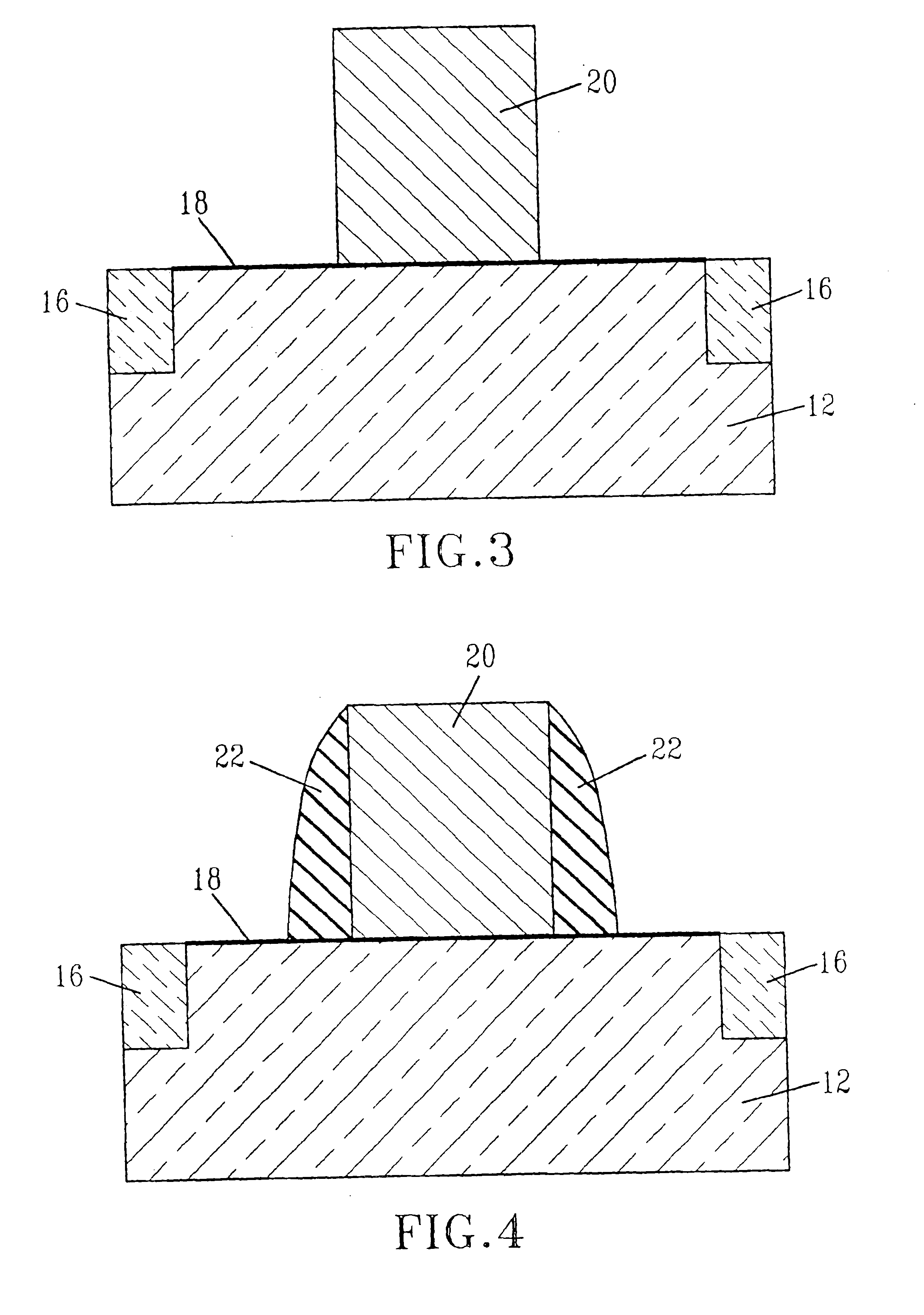Strained silicon-channel MOSFET using a damascene gate process
a damascene gate and silicon channel technology, applied in the direction of semiconductor devices, basic electric elements, electrical equipment, etc., can solve the problems of high junction leakage, high junction leakage, and high cost of si/sige system mosfet process, so as to improve the transport properties of fets and reduce leakage junctions
- Summary
- Abstract
- Description
- Claims
- Application Information
AI Technical Summary
Benefits of technology
Problems solved by technology
Method used
Image
Examples
Embodiment Construction
[0032]The present invention, which provides a method of fabricating local strained channel MOSFETs, will now be described in greater detail by referring to the drawings that accompany the present application. In the accompanying drawings, like and / or corresponding elements are referred to by like reference numerals.
[0033]Reference is first made to FIG. 1 that illustrates an initial structure 10 that can be employed in the present invention. Specifically, the initial structure 10 shown in FIG. 1 comprises a Si-containing semiconductor substrate or wafer 12 having trench isolation regions 16 formed therein and a pad oxide layer 14 located on surface portions of the Si-containing semiconductor substrate 12.
[0034]The term “Si-containing semiconductor substrate” denotes any semiconductor material that includes at least silicon. Illustrative examples of Si-containing semiconductor materials that can be used as substrate 12 include, but are not limited to: Si, SiGe, SiC, SiGeC, silicon-on-...
PUM
 Login to View More
Login to View More Abstract
Description
Claims
Application Information
 Login to View More
Login to View More - R&D
- Intellectual Property
- Life Sciences
- Materials
- Tech Scout
- Unparalleled Data Quality
- Higher Quality Content
- 60% Fewer Hallucinations
Browse by: Latest US Patents, China's latest patents, Technical Efficacy Thesaurus, Application Domain, Technology Topic, Popular Technical Reports.
© 2025 PatSnap. All rights reserved.Legal|Privacy policy|Modern Slavery Act Transparency Statement|Sitemap|About US| Contact US: help@patsnap.com



